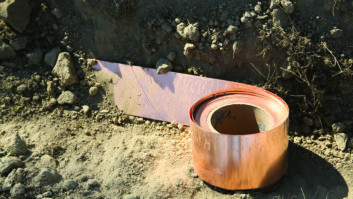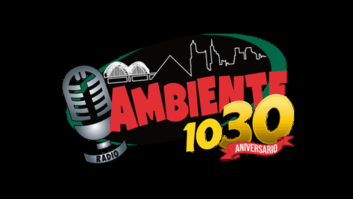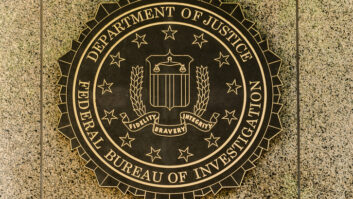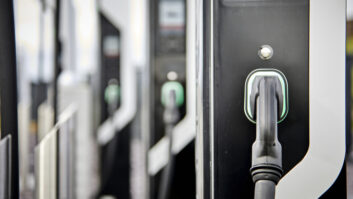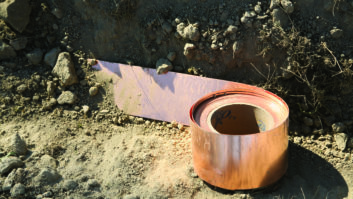I recently spoke at a Society of Broadcast Engineers Ennes Workshop, co-sponsored by the Connecticut Broadcasters Association and SBE Chapter 14, the Connecticut Valley Chapter.
Ennes workshops were created in 1991 to bring affordable education to members locally. The Ennes Educational Foundation Trust offers them around the United States. Programs typically are a day in length and focus on technology.

Fig. 1: Attend an SBE Ennes Workshop if you can. Here’s a group at the recent meeting in Connecticut. Photo by Jim Peck
As you can see in Fig. 1, the Connecticut event drew a good turnout of engineers. I recommend you attend if one comes to your area. If you don’t see your town on the schedule, talk to your SBE chapter about sponsoring an Ennes Workshop. Find out more by heading to www.sbe.org or e-mailing SBE Education Director Kimberly Kissel via the website.
* * *
A member of Chapter 14 and a contributor to Workbench is Bob Meister, who shared stories of transmitter site vandalism and copper theft.
An AM station had a problem recently in which its transmitter would stay off at pattern change. The cause: thieves had stolen about 8 feet of copper tubing that had been used as the RF feed-line from the ATU to the tower. The tower light wires inside the tube were missing too.
The resulting open circuit prevented the station from operating on its directional pattern.
Further inspection disclosed that the thieves also had removed most of the three copper ground straps going from the Johnny-ball under the base insulator and over the sides of the concrete pier where they joined the ground system. Only a few short inches of strap remained at each end.
The station installed a piece of 1/2-inch Heliax temporarily to get back on the air.
Another station recently discovered that copper thieves had made off with about 12 feet of 1/2-inch soft copper gas line that ran from the propane tanks to the generator. The station learned about the theft when a crew working at the site asked permission to move its propane tanks, since they weren’t attached to anything!
In warmer seasons, such vandalism tends to increase. Visit your site more often, even if the visits are brief.

Fig. 2: Overgrown weeds and bushes are a fire hazard. They also can serve as cover for a thief or vandal.
While you’re there, keep the property mowed and clear of brush. Who knows what’s going on in the field in Fig. 2?
Do neighbors abut your transmitter site property? Befriend them and give them your cell number. Station T-shirts or coffee mugs will be appreciated. Ditto for your local police or sheriff; an occasional cruise past your site can’t hurt. Chain-link fencing will not prevent someone from gaining access if they are determined enough.
Thanks, Bob, for sharing ugly details of what today’s broadcast engineer can face.
What’s the worst example of vandalism or theft that’s happened to you? Share your story — and what it taught you for next time. E-mail [email protected].
* * *
Another Connecticut Valley SBE member is RW contributor Buc Fitch.
Buc recalls a report in the Radio World NewsBytes e-mail newsletter about some thieves who were caught because the equipment they’d stolen bore highly visible radio station bumper stickers plastered onto the sides. Oops!
Buc takes the idea another step, advising clients to purchase a roll of adhesive-backed return address labels, such as those you see advertised in the Sunday papers. They usually cost $5 for a thousand labels. Have the labels printed with whatever you like.
Buc recommends this format:
Property of WJPB(FM)
#5 Fessenden Road
Marconi, Ill. 99999
Phone: (555) 555-5555
Please Return
Place labels on everything the station owns that’s worth more than the few cents the label cost. If the gear is expensive or travels out of the station (like remote, PA, or RPU systems), put labels inside and out. Buc has found that properly labeled equipment tends not to walk off.
Also use the labels to identify your manuals and other paper documents. Memories can be rusty. If someone borrows a manual, he can’t later forget where it came from if there’s a label staring him in the face.
Buc recently bought a replacement manual for an Arrakis board after his manual had been “borrowed” and never returned; the manual cost about $100. Perhaps a cheap label would have helped avoid that cost.
* * *
Let’s extend Buc’s labeling idea even further and suggest a visual inventory of equipment.
This is a great tool for contract engineers to offer clients for a fixed fee. You snap pictures of all the equipment at a station, then assemble the pictures in booklet or binder form. Or do it with video.
The inventory can be helpful in ascertaining proper insurance coverage; it also helps the station “prove” what equipment was owned, should it be stolen. Take a few moments to add the make, model and serial number to photos, or log them to go with the video.
This service is cheap insurance. Savvy station owners will appreciate the idea.
Contribute to Workbench! You’ll help your fellow engineers and qualify for SBE recertification credit. Send Workbench tips to [email protected]. Fax to (603) 472-4944.
Author John Bisset has spent 43 years in the broadcasting industry … and is still learning. He works for Tieline Technology, is SBE Certified and is a past recipient of the SBE’s Educator of the Year Award.
